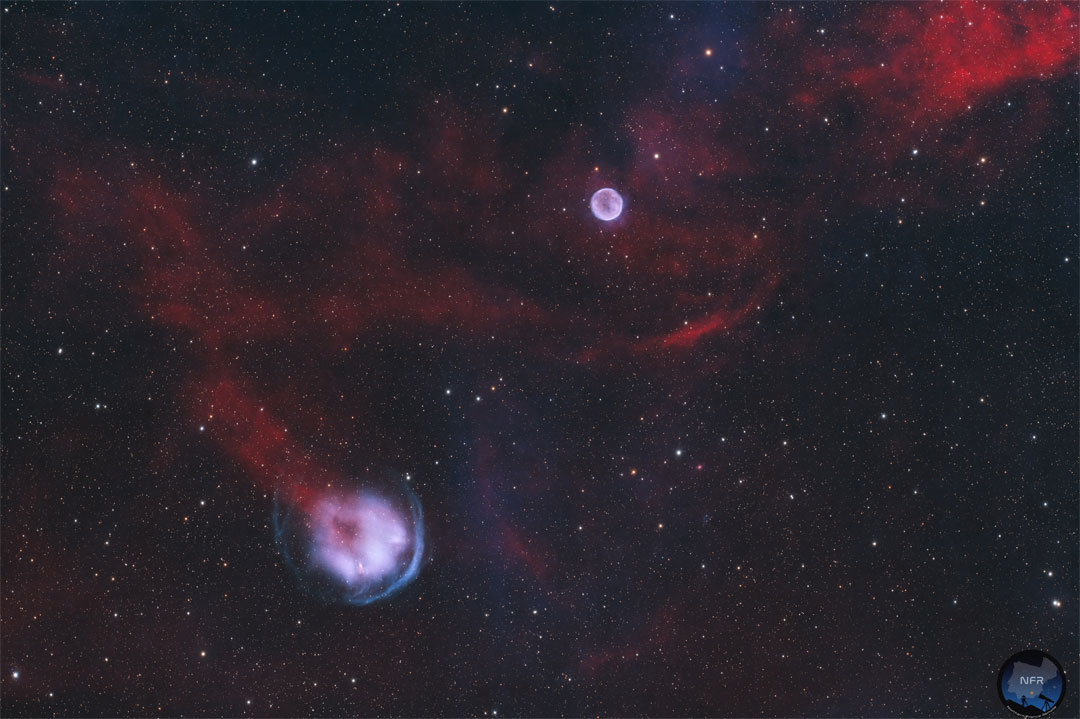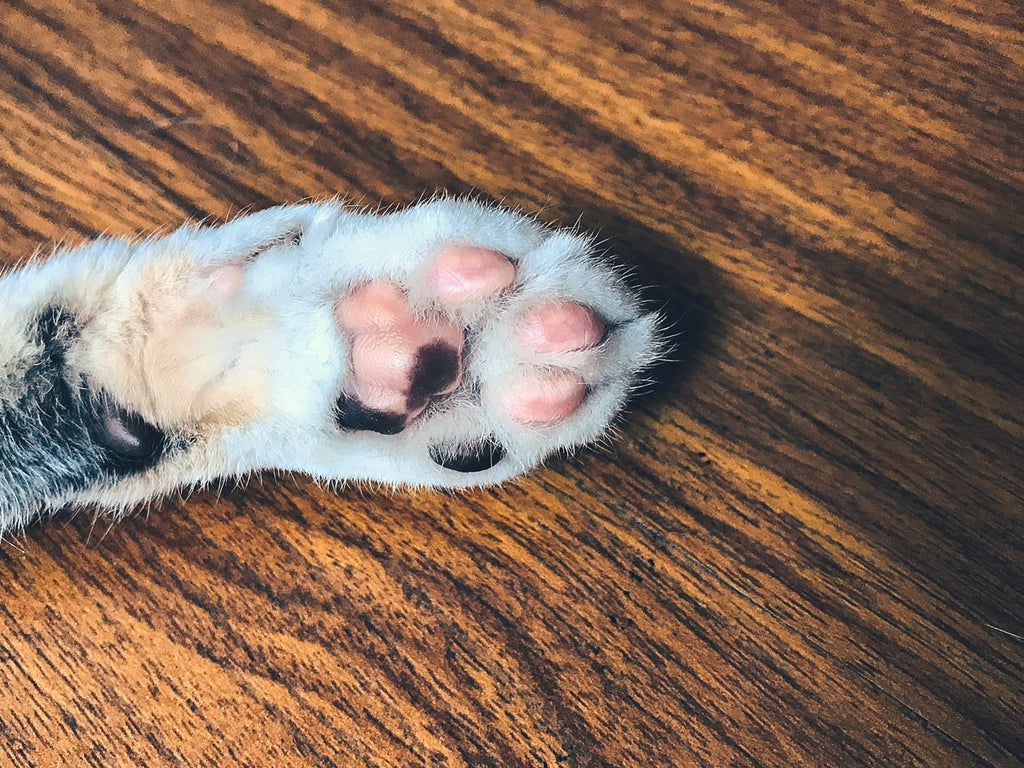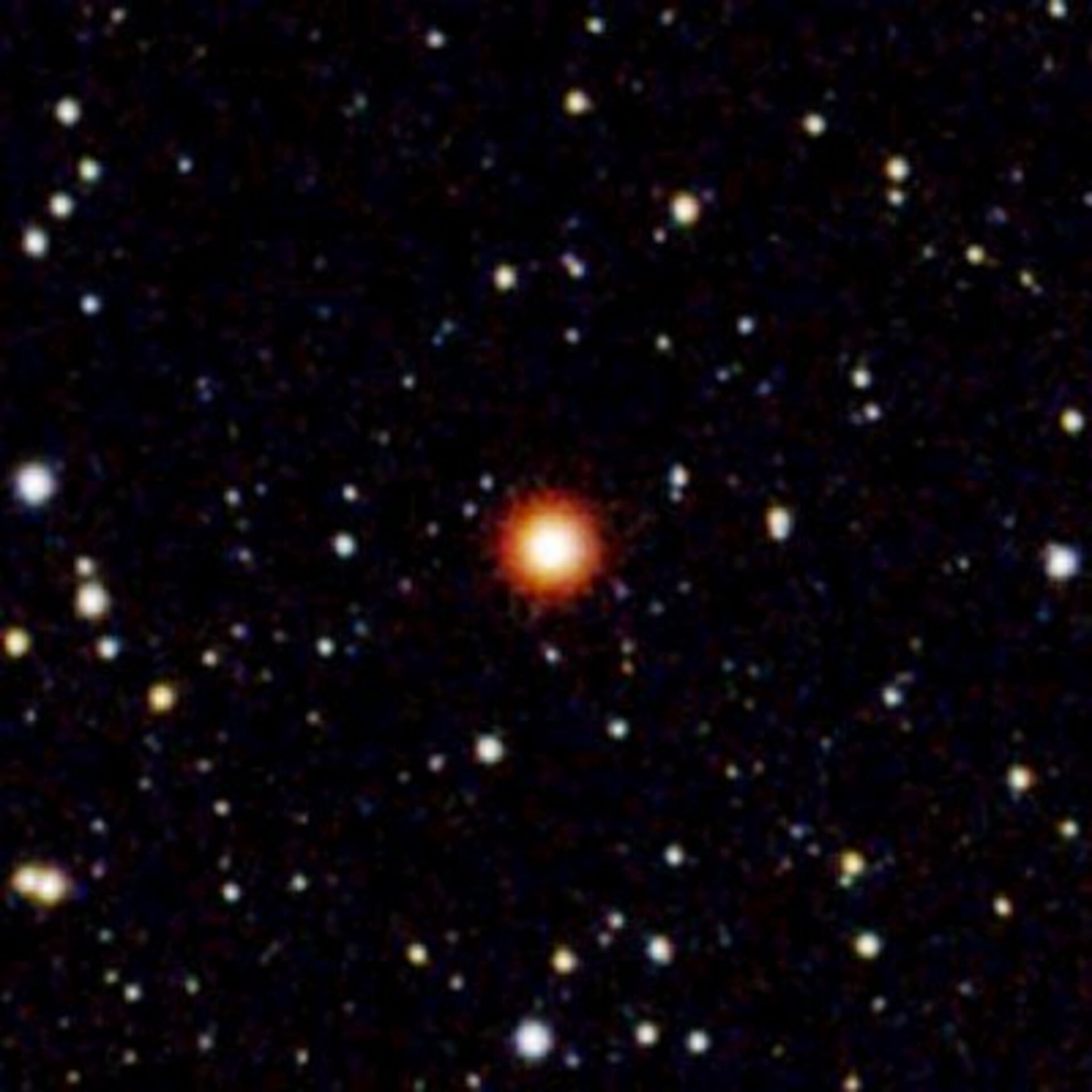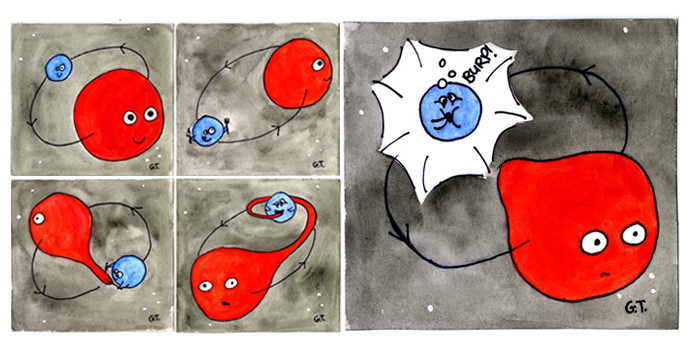Am I the only one who can see a similarity between planetary nebula HFG1 and a cat's paw?

Since I am the Color Commentator, I wondered about this part of the caption:
APOD Robot wrote:
HFG1 was created by the binary star system V664 Cas, which consists of a white dwarf star and a red giant star.
A red giant star? Really? Red giants are typically quite bright (and reddish), and white dwarfs are typically quite faint. Shouldn't the visual light output from this binary system be strongly dominated by the reddish light from the red giant? I don't see any signs of that in planetary nebula HFG1!
I know of only one example of a red giant star with a white dwarf companion, and that is the famous Mira. In visible light, the red giant component outshines its white dwarf companion completely, even though in ultraviolet light the appearance of the binary pair changes dramatically!
Also, and even though this isn't a certainty, isn't there a fairly good chance that the HFG1 system would be a cataclysmic variable, if one of the components is a red giant star? If the white dwarf and the red giant are close enough, matter can start flowing from the red giant onto the white dwarf, which can then have violent nova-like eruptions.
In short, I don't believe that the HFG1 consists of a white dwarf and a red giant. And indeed, the
Heckathorn-Fesen-Gull 1 link in today's APOD takes us to a page where yu can read the following:
HFG1 was created by the central star V664 Cas. This is not a single star, but a dense binary star system consisting of a white dwarf and a sun-like star, which are only a few million kilometres apart and orbit every 14 hours.
So the white dwarf doesn't have a bright red giant companion, and instead its partner is a relatively faint sunlike star. And even though the two stars are very close together they don't yet interact, because the sunlike star is small and holds its outer atmosphere close to itself.
But they will interact in the future! Because the sunlike star will turn into a red giant! And then matter will stream from the red giant onto the white dwarf, and then this stellar pair will become a cataclysmic binary.
But so far, HFG1 is a pre-cataclysmic binary. Everything is calm and peaceful in this planetary nebula binary star system! I'm reminded of the medieval guardians who would keep watch from a tower over their cities at night, and blow their horns at night at regular intervals all night, and shout the following soothing words into the night:
Everything is calm in the streets of ..... (fill in the name of a suitable city).
(And of course, as the Color Commentator I wonder why the shock front of HFG1 is blue in almost all pictures of this nebula. I guess that the blue color could possibly be OIII, mapped as blue.)
Ann
 HFG1 & Abell 6: Planetary Nebulae
HFG1 & Abell 6: Planetary Nebulae





